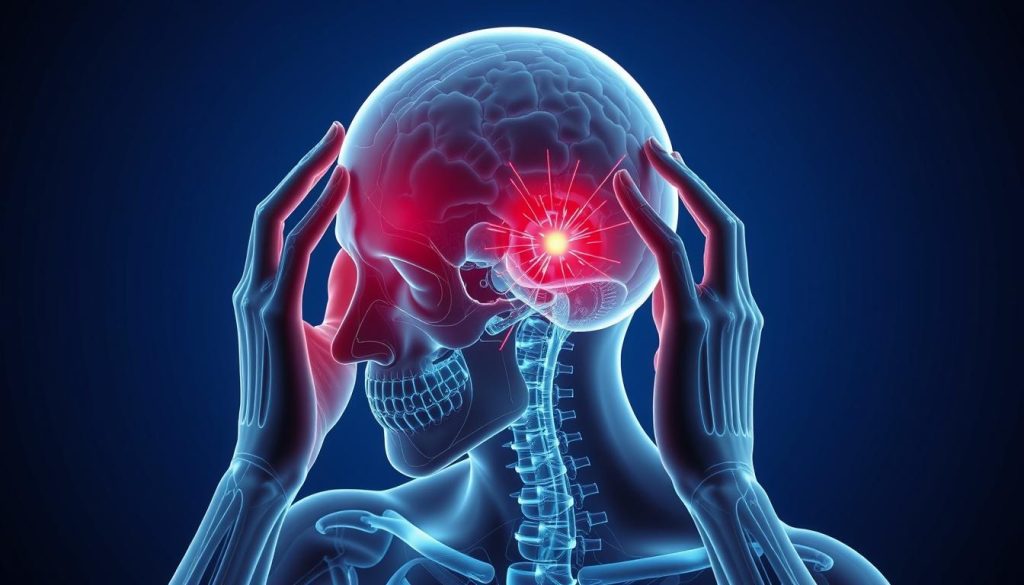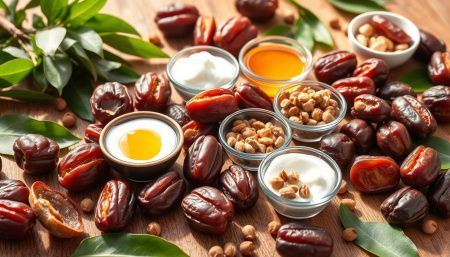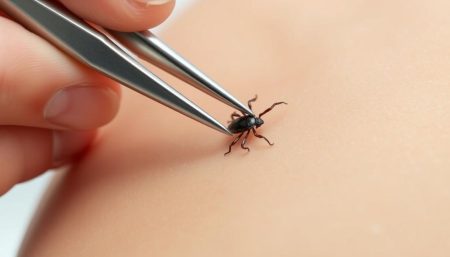The journey to recovery after a stroke is complex. It involves not just the immediate effects but also a long-term path of rehabilitation and adjustment. Understanding stroke prognosis is key for both patients and medical researchers. Knowing the possible outcomes, recovery expectations, and the impact of medical advances in stroke treatment is essential.
This article aims to shed light on the various aspects of stroke outcomes. It will explore the many factors that affect a patient’s prognosis.
Let’s explore the details of stroke recovery together. We’ll look at the journey from diagnosis to long-term care. We’ll also see how modern healthcare helps improve recovery for stroke survivors in the United States.
Introduction to Stroke Prognosis
Understanding stroke prognosis is key for doctors and families. It helps plan for stroke recovery and sets realistic hopes. Every stroke is different, so each stroke survivor needs a unique plan.
Figuring out a stroke’s outcome is complex. It depends on how severe the stroke was, where in the brain it hit, and how fast treatment started. This part shows why it’s vital to get a stroke prognosis right. It ensures each survivor gets the best care.
- Personalized Care: Making rehab goals fit each person’s outlook.
- Family Understanding: Helping families know what to expect and how to support.
- Resource Allocation: Using healthcare resources wisely by focusing on who needs them most.
While we can’t predict everything, we can learn a lot from detailed checks by doctors. These checks are key to helping stroke survivors on their way to recovery.
| Assessment Criteria | Role in Stroke Prognosis |
|---|---|
| Brain Imaging Results | Shows how much brain damage there is and how much recovery might be possible |
| Physical Capabilities | Looks at how much a person can move, helping plan physical therapy |
| Cognitive Function | Checks how memory, thinking, and risk of getting worse are affected |
| Emotional and Psychological Health | Looks at the emotional support needed for full recovery |
Every part of the check-up gives important info for a full stroke prognosis. This helps doctors create the best recovery plan. It aims to improve health and life quality for stroke survivors.
Defining Stroke and Its Types
Knowing the different stroke types is key for good stroke diagnosis and care. A stroke happens when blood flow to the brain stops or slows down. This means brain cells can’t get oxygen and nutrients. They start dying quickly.
This article will look at two main types of stroke: ischemic and hemorrhagic.
Ischemic Stroke Explained
An ischemic stroke is the most common, making up about 87% of strokes. It occurs when a clot blocks or narrows an artery to the brain. This severely cuts down blood flow (ischemia).
Things like blocked arteries from cholesterol or unhealthy eating can cause ischemic stroke.
Hemorrhagic Stroke Overview
A hemorrhagic stroke happens when a blood vessel in the brain bursts. This leads to bleeding (hemorrhage) in or around the brain. It’s less common but very deadly and needs quick medical help.
High blood pressure, aneurysms, or head injuries can cause it.
| Type of Stroke | Cause | Prevalence |
|---|---|---|
| Ischemic Stroke | Blood clots or narrowing arteries | 87% |
| Hemorrhagic Stroke | Burst or torn blood vessels | 13% |
Spotting a stroke early and getting the right stroke diagnosis is vital. Doctors use imaging tests and other methods to figure out the stroke type. This helps decide the best treatment.
Early Indicators of Stroke Outcomes
Spotting the early signs of stroke is key to quick action and better recovery. This part talks about the important signs of stroke and how doctors check the severity at first.
Recognizing the Signs of Stroke
Spotting stroke signs fast can save lives. It’s vital to act quickly. Look out for sudden numbness, confusion, trouble speaking, and severe headaches with no cause.
Initial Assessment Post-Stroke
When a stroke is suspected, doctors quickly check the patient’s brain function. They look at vital signs, do a physical exam, and use scans to find out the stroke type and where it is. This first check helps decide the treatment plan and the patient’s recovery path.
- Immediate evaluation of motor skills
- Cognitive function tests
- Assessment of speech and language
These steps are the foundation of the first stroke check. They help create a treatment plan that fits the patient’s needs.
Factors Affecting Stroke Prognosis
The outcome of a stroke depends on many factors. Knowing these can help in managing recovery and setting realistic goals for patients and caregivers.
Medical History’s Role in Recovery
An individual’s medical history greatly affects their stroke prognosis. Conditions like diabetes, high blood pressure, and heart disease can make recovery harder. Healthcare teams must consider these when planning treatment.
The Impact of Stroke Severity
Stroke severity is a key factor in prognosis. The amount of brain damage determines the need for rehabilitation and the chance of full recovery. Severe cases might need long-term care, including surgery or intense rehab.
Age and Gender Differences in Stroke Recovery
Recovery can differ based on age and gender. Younger people usually recover faster and more fully. Women often face more challenges than men, due to biological, social, and psychological reasons.
| Age Group | Recovery Rate | Comments |
|---|---|---|
| Under 65 | High | Generally faster and more complete recovery |
| 65-75 | Moderate | Recovery is slower, support needed |
| Over 75 | Low | Significant challenges, intensive care often required |
Predicting Stroke Outcomes
Today, predicting stroke outcomes is more accurate thanks to new tools and techniques. Healthcare providers use neurological, functional assessments, and imaging tests. This helps them create personalized recovery plans for each patient.
Neurological and Functional Assessments
Neurological assessments are key in predicting stroke outcomes. They check how much brain damage has occurred right after a stroke. Functional assessments look at how well a person can do daily tasks. This helps figure out what kind of rehabilitation they need and how long it might take.
These assessments include tests of thinking, motor skills, and senses. They help doctors plan for both short-term and long-term recovery goals.
Imaging Tests and Stroke Prognosis
Imaging tests like CT scans and MRIs are vital in the early stages of stroke care. They show exactly where the brain is damaged. This information helps doctors predict complications and outcomes better.
Here’s a look at how different imaging tests help predict recovery:
| Imaging Test | Description | Relevance to Stroke Prognosis |
|---|---|---|
| CT Scan | Uses X-rays to create detailed images of the brain. | Quickly identifies hemorrhages, lesions, and areas of ischemic stroke. |
| MRI | Employs strong magnetic fields and radio waves to produce detailed images of the brain’s internal structures. | Superior in detecting smaller lesions and damage in brain tissue, critical for long-term prognosis. |
| Ultrasound | Uses sound waves to assess blood flow in the cerebral arteries. | Helpful in detecting vascular abnormalities that could influence stroke risk and recovery. |
In summary, combining neurological, functional assessments, and imaging tests greatly improves stroke outcome predictions. It also leads to better stroke rehabilitation plans. This results in a better quality of life and recovery chances for stroke survivors.
Stroke Prognosis
Understanding stroke prognosis is key for patients, doctors, and caregivers. It looks at how well a patient might do after a stroke. This depends on many things about the patient.
Every stroke is different. Some people get better quickly, while others face big challenges. The path to recovery is unique for each person.
- Medical history and pre-existing conditions
- Severity and type of the stroke
- Speed and quality of initial treatment and ongoing care
To predict how well someone will recover, we need to know these details. This is how we figure out the stroke prognosis.
| Factor | Impact on Stroke Recovery |
|---|---|
| Age | Younger patients often have better recovery rates |
| Medical History | Pre-existing conditions can complicate recovery |
| Type of Stroke | Ischemic strokes usually have a clearer recovery path than hemorrhagic strokes |
| Care Quality | High-quality, immediate treatment can significantly enhance outcomes |
For the best results, a treatment plan should be made just for the patient. This way, we can help them recover as well as possible.
Timeframe for Stroke Recovery
Knowing how long it takes to recover from a stroke is key. It helps patients, families, and healthcare teams understand what to expect. The timeframe for stroke recovery changes based on the stroke’s severity, brain area affected, and the person’s health. We’ll look at both the short-term and long-term recovery periods.
Short-Term Recovery Expectations
The first few hours to months after a stroke are critical. This time is for stabilizing the patient and dealing with the stroke’s immediate effects. Important parts of short-term recovery include getting back lost skills, avoiding complications, and starting therapy. Patients often see quick improvements, showing they’re on the road to recovery.
Understanding Long-Term Stroke Recovery
Long-term recovery can last from months to years. It’s a time for slow but steady progress, shaped by ongoing therapy. The main goals are to boost function, lessen long-term effects of stroke, and improve life quality. How well someone adapts to physical and mental changes is vital in this phase.
Recovering from a stroke, both short-term and long-term, needs focused help and support. Below is a comparison of typical recovery milestones for both phases:
| Recovery Phase | Timeline | Key Milestones |
|---|---|---|
| Short-Term Recovery | 0-6 months | Stabilization, early rehabilitation, prevention of secondary conditions |
| Long-Term Recovery | 6 months – years | Advanced rehabilitation, community reintegration, lifestyle adaptation |
Long-Term Effects of Stroke
Understanding the long-term effects of stroke is key to better patient care and quality of life. This section looks at cognitive and physical challenges after a stroke.
Cognitive Impacts Post-Stroke
Many survivors face big cognitive challenges from stroke. These include memory, attention, and problem-solving issues. These problems can mess up daily life and make it hard to go back to work or keep social ties.
Physical Challenges After a Stroke
Physical challenges post-stroke vary but often include paralysis and muscle weakness. They can also make coordination and balance hard. These issues may need long-term rehab and change a person’s lifestyle forever.
| Effect | Cognitive | Physical |
|---|---|---|
| Primary Challenge | Memory Loss | Paralysis |
| Secondary Challenge | Difficulty Concentrating | Muscle Weakness |
| Recovery Focus | Cognitive Therapy | Physical Therapy |
Structured rehab programs and ongoing support can help with recovery. They help people regain independence as much as possible.
Stroke Rehabilitation Process
The journey of stroke rehabilitation is key to getting back strength and improving function after a stroke. Knowing the different rehabilitation therapies and setting personal goals for recovery can greatly impact a stroke survivor’s outcome.
Types of Rehabilitation Therapies
Stroke rehabilitation uses many therapies tailored to meet specific needs. These include:
- Physical Therapy: Works on improving motor skills, balance, and coordination.
- Occupational Therapy: Helps with daily living skills like eating, bathing, and dressing.
- Speech Therapy: Crucial for recovering communication skills and managing swallowing issues.
- Cognitive Rehabilitation: Focuses on restoring memory, problem-solving, and attention.
Each therapy is vital for a complete stroke rehabilitation, aiming to boost independence and quality of life.
Setting Goals for Stroke Recovery
Setting realistic and achievable goals is a key step in stroke rehabilitation. Goals should be SMART: Specific, Measurable, Achievable, Relevant, and Time-bound. Here are some examples:
- Regaining the ability to walk unassisted over a distance of 100 feet within three months.
- Improving grip strength to perform daily activities like writing or dressing within six weeks.
- Enhancing verbal communication abilities to engage in simple conversations within two months.
Clear goals guide the rehabilitation process, motivate survivors, and their healthcare teams to work towards specific targets.
Role of Support Systems in Stroke Recovery
The journey to recovery after a stroke depends a lot on the support systems available. These include family and caregivers, as well as community resources. They play a huge role in how well someone recovers and their mental health. This shows how important they are for a full recovery.
Family and Caregiver Involvement
Family support during recovery is very important. It offers both emotional and practical help. This support can make a big difference in how well someone recovers.
Training family members to help with daily tasks and therapy can make recovery faster. It also makes it more comfortable at home.
Community Resources for Stroke Survivors
Community resources are key for long-term recovery. They include support groups, special rehab programs, and educational workshops. These help survivors deal with life after a stroke.
These resources improve their quality of life. They also offer chances for social interaction and community involvement. This is vital for emotional healing.
Support systems, both personal and community-based, are essential for recovery. They show the importance of strengthening these networks. This helps stroke survivors regain their independence and improve their quality of life.
Measuring Progress During Stroke Recovery
Tracking stroke recovery progress and finding stroke recovery milestones is key for survivors and doctors. It shows where the patient is in their recovery and what they need to do next.
Progress is checked through clinical tests, patient reports, and special recovery scales. These tools show how well someone is getting better and help plan their treatment.
- Functional Independence Measure (FIM): Checks how much someone can do on their own and how it changes.
- National Institutes of Health Stroke Scale (NIHSS): Gives a number score of how much a stroke has affected the brain.
- Modified Rankin Scale: Shows how much someone can do in daily life.
Watching stroke recovery milestones means seeing and recording big wins in moving, thinking, and talking. Achievements like walking alone or doing hard tasks by themselves show how far someone has come.
| Recovery Phase | Milestone | Expected Time Frame |
|---|---|---|
| Acute | Stabilization of Vital Signs | First 24 Hours |
| Early Recovery | Regaining Basic Movement and Speech | 1-3 Months |
| Late Recovery | Improved Cognitive Functions | 6 Months – 1 Year |
It’s vital for people and families to see these goals as a reason to keep going and to work with doctors to change treatment plans. Every person’s path is different. Setting goals based on these milestones can really help in the recovery process.
Complications That Can Affect Stroke Recovery
Recovering from a stroke is a complex journey. It’s filled with stroke recovery complications. Understanding post-stroke complications and how to prevent secondary strokes is key.
Identifying Post-Stroke Complications
After a stroke, many complications can affect recovery. These include physical disabilities, cognitive issues, and emotional disorders. Spotting these early is important for better recovery.
- Physical complications like paralysis or muscle weakness
- Cognitive issues including memory loss or changes in judgement
- Emotional disturbances such as depression or anxiety
Preventing Secondary Strokes
Preventing secondary strokes is a big concern in recovery. A second stroke can greatly hinder progress. Healthcare professionals recommend several strategies:
- Maintaining a balanced diet with low sodium and fat
- Regular physical activity tailored to individual capabilities
- Strict management of blood pressure, cholesterol, and diabetes
- Regular check-ups and monitoring with healthcare providers
Preventing secondary strokes requires a holistic approach. This includes lifestyle changes and medical management.
| Complication | Prevention Strategy | Impact on Recovery |
|---|---|---|
| Physical Disability | Physical therapy, regular exercise | Improves mobility and independence |
| Cognitive Decline | Cognitive therapies, mental exercises | Enhances mental functions and daily living skills |
| Emotional Disorders | Counseling, support groups | Better emotional health and social interaction |
Living with the Aftermath of Stroke
Life after a stroke brings big changes for survivors and their families. It’s about making lifestyle changes and finding ways to cope emotionally.
Lifestyle Adjustments for Stroke Survivors
Adjusting to life after a stroke is key for a better quality of life. It’s about making daily tasks easier and safer. Here are some common changes:
- Home modifications such as ramps, grab bars, and widened doorways to accommodate mobility devices.
- Adoption of assistive technologies like voice-activated systems and specialized utensils for eating.
- Revised diet and exercise plans under medical supervision to improve overall health and prevent further strokes.
These changes help with physical comfort and independence.
Coping Strategies for Emotional Changes
Stroke survivors often face emotional ups and downs. These can slow down recovery. It’s important to find ways to cope emotionally. Here are some strategies:
- Engagement in support groups to share experiences and solutions.
- Regular consultations with psychologists or counselors specialized in post-stroke care.
- Incorporating relaxation techniques such as mindfulness, meditation, or gentle yoga into daily routines.
Helping with emotional wellbeing is key to recovery and a better lifestyle after stroke.
For more details on how these changes fit into daily life and recovery, see the table below:
| Adjustment / Strategy | Benefits | Implementation Tips |
|---|---|---|
| Home Modifications | Increases safety and mobility | Work with an occupational therapist for personalized advice |
| Assistive Technologies | Enhances independence in daily tasks | Start with simple tools, gradually advancing as needed |
| Support Groups | Provides emotional support and community understanding | Join local or online stroke recovery groups |
| Psychological Counseling | Helps in managing emotions and mental health | Seek referrals to specialists with experience in stroke recovery |
| Mindfulness and Meditation | Reduces stress and improves mental clarity | Integrate short sessions into the daily routine |
Stroke Survival Rate and Statistics
Understanding stroke survival rate and stroke statistics is key. It shows how far we’ve come in treating strokes. It also helps doctors make recovery plans better.
Thanks to new medical tech, emergency care, and rehab, survival rates have gone up. The latest stroke statistics show fewer deaths and more people recovering well.
| Year | Survival Rate | Mortality Rate |
|---|---|---|
| 2010 | 76% | 24% |
| 2015 | 81% | 19% |
| 2020 | 85% | 15% |
The table shows a clear rise in stroke survival rate over ten years. This is due to better stroke care, more public awareness, and easier access to stroke recovery centers.
Even with these gains, we must keep researching and teaching the public. Keeping track of stroke statistics is vital. It helps us keep improving and ensures survivors live well.
Assessing Stroke Prognosis: The Role of Healthcare Providers
Healthcare providers play a key role in assessing stroke prognosis. They use a detailed care plan and ongoing monitoring to help patients. This approach considers many aspects of care, thanks to the teamwork of healthcare providers and other specialists.
Interdisciplinary Teams in Stroke Care
Interdisciplinary teams are vital for complex stroke cases. They bring together experts from different fields. This includes neurology, physical therapy, and nursing, among others.
This team effort leads to a care plan that focuses on the patient. It helps in making and changing treatment plans based on the patient’s needs.
Regular Follow-Ups and Monitoring
Regular follow-ups are key for tracking a patient’s progress. They help spot any changes in the patient’s condition. This allows for early management of complications and adjustments to treatment.
| Time After Stroke | Follow-Up Actions |
|---|---|
| 1 Month | Evaluation of neurological function, physical capabilities, and psychological state. |
| 3 Months | Assessment of recovery progress, adjustment of rehabilitation goals. |
| 6 Months | Updated care plan based on patient’s recovery rate and feedback from interdisciplinary team. |
| 12 Months | Annual review of patient health and long-term prognosis evaluation. |
These follow-ups keep the recovery process on track. They highlight the importance of healthcare providers in shaping stroke prognosis. This is done through active and ongoing patient care.
Advancements in Stroke Treatment and Prognosis
Medical technology and research have greatly changed how we manage strokes. New advancements in stroke treatment offer hope to those affected. Tools like thrombectomy devices and better thrombolytic agents have improved treatment success. They also give patients more time to get help, saving lives.
Healthcare has become more precise and quick thanks to better neuroimaging. This lets doctors tailor treatments for each patient. It’s a big step forward in stroke care.
Rehabilitation has also seen big changes with new technology. Tools like robotic-assisted therapy and virtual reality are helping patients recover. These tools are changing how we help stroke survivors regain their strength and independence.
Rehab programs are now made just for each patient. This focus on the individual has led to better recovery times. It’s making a big difference in the lives of stroke survivors.
Research is also key in improving stroke care. Trials for new treatments are showing great promise. This means the future for stroke recovery looks brighter than ever.
As these advancements in stroke treatment become part of everyday care, they’re changing lives. They’re giving more people hope and the chance to live fully after a stroke.
FAQ
Q: What does understanding stroke prognosis entail?
A: Understanding stroke prognosis means knowing how recovery will go. It’s about the possible outcomes for survivors. And how today’s medicine can help improve these outcomes.
Q: Why is predicting stroke outcomes complex?
A: Predicting outcomes is hard because many things matter. This includes the patient’s health history, the stroke type and severity, and their age and gender.
Q: What are the primary types of stroke?
A: There are two main types of stroke. Ischemic stroke happens when a blockage stops blood flow to the brain. Hemorrhagic stroke is caused by bleeding in or around the brain.
Q: Why are early indicators of stroke outcomes important?
A: Early signs are key. They help start treatment quickly. This can greatly affect how well a person recovers.
Q: How does stroke severity affect prognosis?
A: How severe a stroke is matters a lot. It shows how much damage there is and how much recovery is possible.
Q: Can age and gender affect stroke recovery?
A: Yes, age and gender can change how recovery goes. Younger people often do better. Some studies suggest gender can also play a role.
Q: What assessments are used in predicting stroke outcomes?
A: Doctors use many tests to predict outcomes. These include checking the brain’s function and looking at scans like CTs and MRIs.
Q: What is the typical timeframe for stroke recovery?
A: Recovery has two parts. The first few months are critical for big improvements. After that, recovery is slower but keeps going for years.
Q: What are common long-term effects of a stroke?
A: Long-term effects include memory and attention problems. People may also face physical challenges like muscle weakness.
Q: What is involved in the stroke rehabilitation process?
A: Rehabilitation includes many therapies. These are tailored to the patient’s needs. The goal is to set and reach recovery milestones.
Q: What roles do support systems play in stroke recovery?
A: Support systems are vital. They offer emotional, practical, and financial help. This is essential for a survivor’s recovery.
Q: How is progress during stroke recovery measured?
A: Progress is tracked through tests and milestones. It’s compared to goals set for the patient’s recovery.
Q: What complications can affect stroke recovery?
A: Complications include infections and the risk of another stroke. These need to be prevented to help recovery.
Q: What lifestyle adjustments are necessary after a stroke?
A: Adjustments include diet changes and exercise. Patients must also take medication and make home changes to fit their new abilities.
Q: What is the current stroke survival rate?
A: Survival rates vary by area and who you are. But, thanks to better care, they have gotten better over time.
Q: What is the role of healthcare providers in stroke prognosis?
A: Healthcare providers are key. They assess prognosis, support recovery, and guide ongoing care. They do this with regular check-ups and monitoring.
Q: How have advancements in treatment influenced stroke prognosis?
A: New treatments have greatly improved recovery rates. This includes better emergency care, surgery, and rehabilitation methods.


















